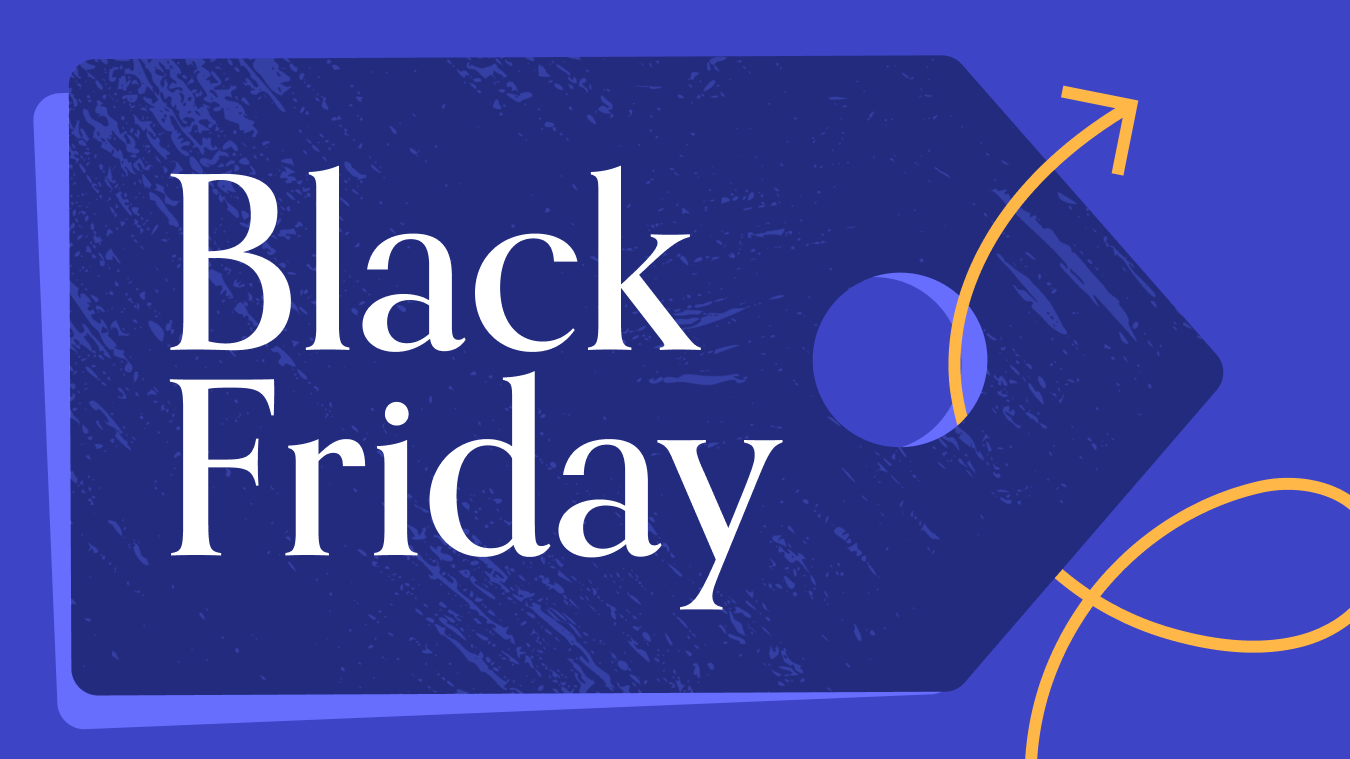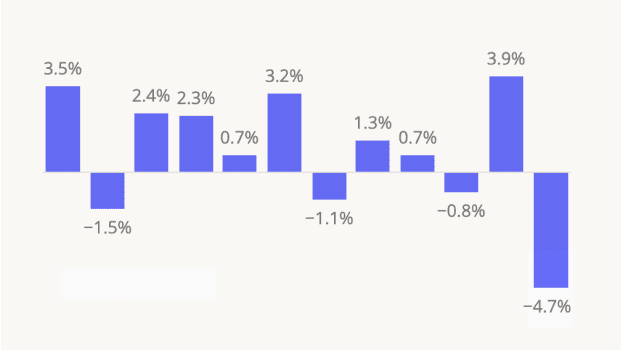Insights into the physical world anchored in location analytics

INSIDER
Report
5 Markets to Watch in 2026Find out why Salt Lake City, Reno, Indianapolis, Raleigh, and Tampa are Placer.ai's markets to watch in 2026.
Placer Research
December 1, 2025
Industry Trends
Year-Over-Year Visits to Grocery Stores by State
Article

Article
Four Black Friday Signals for the 2025 Holiday Season The Kroger Co, is a leading player in the grocery store space, operating its epon lorem ipsum dolor sit amet, consectetur adipiscing elit, sed do eiusmod tempor incididunt ut labore et dolore magna aliqua. Ut enim ad minim veniam, quis nostrud exercitation ullamco laboris nisi ut aliquip ex ea commodo consequat. Duis aute irure dolor in reprehenderit in voluptate velit esse cillum dolore eu
Shira Petrack
Dec 5, 2025
4 minutes
Article

Article
Will Upscale Dining Lead the Holiday Season Again?The Kroger Co, is a leading player in the grocery store space, operating its epon lorem ipsum dolor sit amet, consectetur adipiscing elit, sed do eiusmod tempor incididunt ut labore et dolore magna aliqua. Ut enim ad minim veniam, quis nostrud exercitation ullamco laboris nisi ut aliquip ex ea commodo consequat. Duis aute irure dolor in reprehenderit in voluptate velit esse cillum dolore eu
Bracha Arnold & Lila Margalit
Dec 4, 2025
4 minutes
Article

Article
Did Fewer Franchise Films Limit Thanksgiving’s Movie Theater Lift?The Kroger Co, is a leading player in the grocery store space, operating its epon lorem ipsum dolor sit amet, consectetur adipiscing elit, sed do eiusmod tempor incididunt ut labore et dolore magna aliqua. Ut enim ad minim veniam, quis nostrud exercitation ullamco laboris nisi ut aliquip ex ea commodo consequat. Duis aute irure dolor in reprehenderit in voluptate velit esse cillum dolore eu
Shira Petrack
Dec 3, 2025
3 minutes
Article

Article
Darden Heads Into Holiday Season With Strong Visit TrendsThe Kroger Co, is a leading player in the grocery store space, operating its epon lorem ipsum dolor sit amet, consectetur adipiscing elit, sed do eiusmod tempor incididunt ut labore et dolore magna aliqua. Ut enim ad minim veniam, quis nostrud exercitation ullamco laboris nisi ut aliquip ex ea commodo consequat. Duis aute irure dolor in reprehenderit in voluptate velit esse cillum dolore eu
Bracha Arnold
Dec 2, 2025
3 minutes
Latest

Article
How Did Grocery Stores Perform This Turkey Wednesday?Turkey Wednesday 2025 drove major traffic to grocery stores, with traditional supermarkets seeing the biggest visit spikes, while value chains led early-week shopping. Dwell times showed a shift from early stock-up trips to quick last-minute runs, and all analyzed major grocers posted year-over-year visit growth.
Lila Margalit
December 1, 2025
4 Minutes

Article
How Do Holiday Shopping Patterns Differ for Off-Price and Traditional Apparel?Holiday visitation trends differ across apparel segments. Off-price retailers sustain strong, steady traffic from value-seeking shoppers, while traditional brands rely on milestone-driven bursts like Black Friday. Differences in dwell time and shopper mix show how each segment is capturing a unique share of the holiday wallet.
Lila Margalit
November 26, 2025
4 minutes

Article
DICK's Sporting Goods Riding Positive Visit Trend into the HolidaysDICK’S Sporting Goods improved its YoY visit gap from -6.0% in Q1 to -2.6% in Q3 2025, with October visits up 2.2%. The retailer’s 5.0% YoY sales growth and expanding digital reach via Game Changer and House of Sport highlight strong holiday potential despite store closures.
Bracha Arnold
November 25, 2025
2 minutes

Article
Dollar Tree and Dollar General Thrive Amid Inflation FatigueDespite weakened consumer sentiment, Dollar Tree and Dollar General continue to post strong visit and sales growth. Both chains are capitalizing on shoppers’ focus on value, with consistent quarterly gains and October momentum signaling sustained strength into the holidays.
Bracha Arnold
November 24, 2025
2 minutes

Article
October 2025 Placer.ai Office Index: Continued MomentumThe October 2025 Placer.ai Office Index shows continued RTO momentum, with visits just 30.8% below 2019 levels. Miami and New York lead recovery, while San Francisco posts major YoY gains. Yet hybrid habits persist - Friday remains a quiet day, signaling an evolving workweek balance.
Lila Margalit
November 24, 2025
3 minutes

Article
Department Stores Ahead of the Holidays Following uneven Q3 results, department stores rebounded in October 2025. Bloomingdale’s led gains, and key shopping days like Black Friday promise to deliver another lift as the holiday season approaches.
Bracha Arnold
November 20, 2025
4 minutes

Article
Red Cup Day 2025 Outperforms Last Year With Bigger Crowds Than BearistaStarbucks’ 2025 Red Cup Day drew higher visits than both the Bearista launch and previous years. Placer.ai data shows visits jumped 44.5% above average as customers lined up for limited-edition cups and holiday drinks – proving that buzz, exclusivity, and timing continue to drive Starbucks’ seasonal success.
Lila Margalit
November 19, 2025
3 minutes

Article
Gap and Urban Outfitters See Visit Increases in Q3After early-year slowdowns, Gap and Urban Outfitters posted Q3 traffic gains, up 1.4% and 2.4% YoY respectively, reflecting improving consumer demand. Gap’s turnaround and affluent shopper base fueled growth, while Urban’s back-to-school surge lifted visits.
Bracha Arnold
November 19, 2025
4 minutes

Article
Superstores and Warehouse Clubs Find Early Holiday MomentumFoot traffic to major warehouse clubs and superstores rose in fall 2025 as Costco, BJ’s, and Sam’s Club continued to thrive in a value-conscious environment, while early holiday promotions drove visits to Walmart and Target.
Ezra Carmel
November 19, 2025
4 minutes

Article
Lowe’s and The Home Depot See the Future of Home Improvement in the Next GenerationAs the home improvement sector adjusts to changing consumer behavior, Lowe’s and The Home Depot show growing potential with Gen Z. Location analytics reveals how both brands are positioning for the next phase of growth in 2025.
Ezra Carmel
November 18, 2025
4 minutes

Article
TJX, Burlington, and Ross Gear Up for a Blockbuster Holiday SeasonFoot traffic to off-price giants TJX, Burlington, and Ross is growing as budget-conscious consumers flock to value and discovery-driven shopping. With traffic surging across banners, these retailers are well-positioned for a standout holiday season.
Lila Margalit
November 18, 2025
3 minutes
.png)
Executive Insights
Back to the Future of Retail: Why Technology Is Bringing Us Full CircleTechnology is taking retail full circle, reviving old models like the milkman and general store. Dive into the data to see how innovations in retail apply new tools to old habits, bringing the industry back to basics with authenticity and a hyper-local focus.
Hue Chen
November 17, 2025
5 Minutes





.png)
.png)

.png)
.png)


.png)
.png)









.svg)